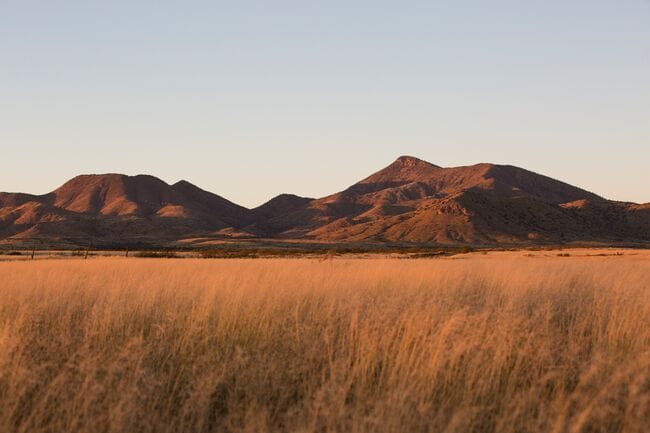When Josiah Austin bought Cienega Ranch nearly 30 years ago, it was in rough shape. The 33,100-acre spread on the Arizona-Mexico border takes its name from the cienega, or grassy marsh, that used to fill the valley floor—a lively green oasis in an otherwise austere landscape.
“But by the time I came along, that cienega had been dry for oh, probably at least 150 years,” says Austin. Instead of a rich, productive wetland, the ranch was cut with a network of steep, eroded gullies and covered in dusty scrub. With little water and not much to eat, birds and wildlife were a rare sight.
In the centuries after Europeans arrived, widespread overgrazing accelerated erosion across the Southwest, damaging the landscape’s ability to retain water. Today, intact cienegas are rare— but Austin is working to change that. “I feel very strongly that the cattle operation should coexist with wildlife,” he says. “The cattle operation is important, but it’s just one aspect of my responsibility to this land.”

Josiah Austin has been ranching in southern Arizona for decades. He’s learned about restoring arid, overgrazed desert to productive, diverse grasslands—through lots of trial and error. Photo: Chris Hinkle
In the decades he’s owned Cienega Ranch, Austin has tried everything he can think of to restore the land’s natural function as a healthy, welcoming place—for cattle and wildlife alike. He’s built berms, dams, and rock walls to capture and store stormwater. He’s experimented with herd size and grazing rotation to make sure his cattle don’t eat more ground cover than the land can easily regrow, and he’s torn down miles of fences that prevented deer and other large mammals from moving freely across the land. He’s also working with biologists and schoolkids to reintroduce wildlife—turkeys, quail, fish, and prairie dogs—to the land where they once roamed.
“A lot of times students have gotten wrong impressions about ranchers in general,” Austin says. “It’s nice to let them know that we can be environmentalists and conservationists.” Case in point: Trust for Public Land has been working with Austin for years to protect this valuable habitat. In 2022, we secured an additional 7,852-acre parcel, resulting in a total of 27,100 acres of grassland forever protected from development or subdivision.
And the results are plain to see. “Now I can stand on my front porch and look out over a sea of grass, instead of dust,” he says. “It’s a nicer view for anyone driving through the valley.”
And humans aren’t the only animals enjoying the upgrades. In 2016, motion activated cameras captured photographs of a jaguar on Cienega Ranch—sending a thrill through the community of biologists and conservationists working to bring jaguars back to their historic range in the Chiricahua Mountains.
The victims of widespread habitat loss, hunting, and even a federal eradication campaign, jaguars essentially disappeared from the U.S. by the mid-20th century; only seven males have been documented in the U.S. since 1996, according to the U.S. Fish and Wildlife Service. Thankfully, the same cat spotted in 2016 has been seen intermittently on the ranch over the years since.

Cienega Ranch is within Arizona’s Sky Islands region—arid grasslands punctuated by isolated mountain ranges. Photo: Chris Hinkle
Like the resurgence of native grasses, the jaguar sightings are an indicator of an ecosystem in balance. “It means the space is good for wild animals, and there’s enough deer and other prey on the ranch for the jaguar,” says Austin. “If this ranch had been cut up into 40-acre estates, with lots of dogs and cats and people, that jaguar wouldn’t come around.”
Over the years, Austin has won recognition and awards for his restoration efforts. But he hardly thinks he’s an outlier among the ranchers he knows. “Ranchers in general are starting to be more and more wildlife friendly,” he says. “We were always wildlife friendly, but there’s just more science and information about best practices now than there used to be. The more we learn, the better we can run our operations to benefit all living things.”
This raw, beautiful landscape in Southern California is home to Indigenous heritage sites, and it provides critical habitat for threatened and endangered species. Urge President Biden to safeguard this extraordinary landscape today!

Donate to become a member, and you’ll receive a subscription to Land&People magazine, our biannual publication featuring exclusive, inspiring stories about our work connecting everyone to the outdoors.

